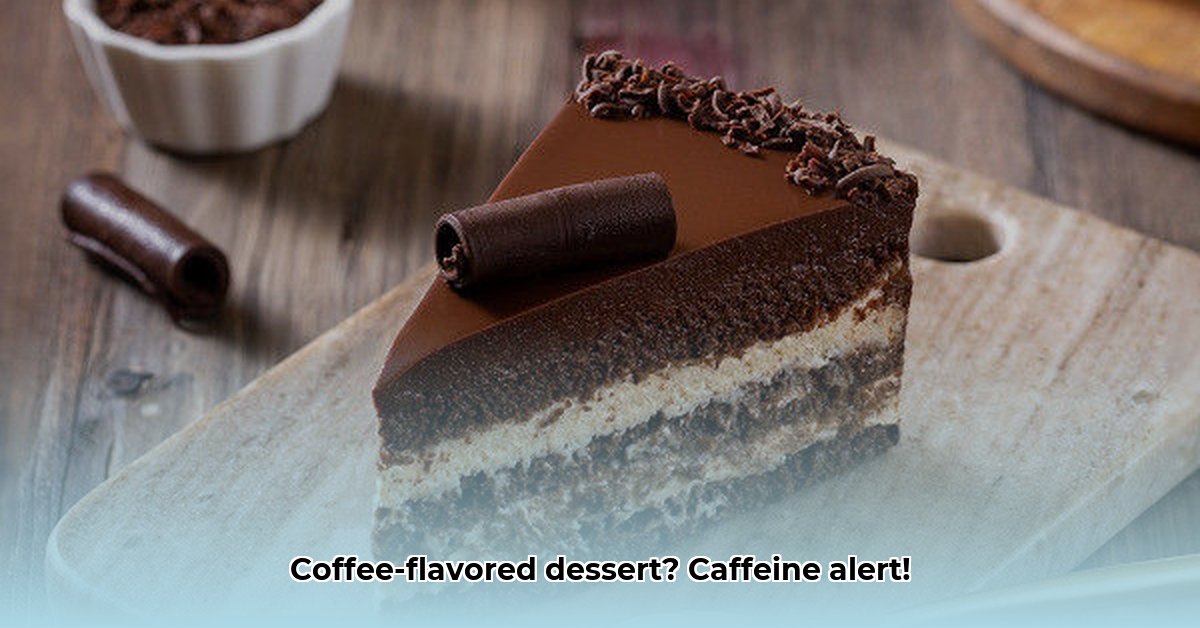Does that tempting tiramisu have a hidden caffeine kick? The answer is yes, but usually less than a cup of coffee. This guide breaks down everything you need to know: how much caffeine is in tiramisu, how it compares to coffee and tea, and how to make a delicious decaf version so you can enjoy this Italian treat anytime.
Decoding the Buzz: Caffeine in Tiramisu
The caffeine in tiramisu comes from the espresso used to soak the ladyfingers. Several factors influence the final caffeine content: the espresso’s strength, the soaking time, and your serving size. While a typical slice likely won’t deliver the same jolt as your morning coffee, a larger portion, especially later in the day, could affect your sleep.
Caffeine Face-Off: Tiramisu vs. Coffee vs. Tea
How does tiramisu compare to your regular caffeine fix? Here’s a general idea, but remember, brewing methods and other factors cause variations:
| Beverage | Caffeine (mg) (Approximate Range) |
|---|---|
| Tiramisu (1 slice) | 25-90 |
| Brewed Coffee (8oz) | 95-200 |
| Espresso (1 shot) | 63-100 |
| Black Tea (8oz) | 47-90 |
| Green Tea (8oz) | 28-50 |
Tiramisu’s caffeine content often falls between black tea and brewed coffee. However, a particularly strong brew or a generous serving could push it closer to a cup of coffee.
The Decaf Delight: Tiramisu Without the Buzz
Craving tiramisu but want to skip the caffeine? Make a decaf version! Simply replace the espresso with decaf coffee or a caffeine-free alternative like chicory root, which offers a similar coffee-like flavor.
Making Decaf Tiramisu: A Step-by-Step Recipe
Here’s how to make a delicious decaf tiramisu:
Ingredients:
- 1 cup strong decaf instant coffee granules (or decaf espresso powder)
- ½ cup boiling filtered water
- 1 cup cold heavy cream
- 16 ounces softened mascarpone cheese
- ½ cup granulated sugar
- 1 teaspoon pure vanilla extract
- ½ teaspoon almond extract (optional, omit for non-alcoholic)
- Pinch of salt
- Approximately 24 ladyfingers (Savoiardi biscuits)
- Unsweetened cocoa powder
Instructions:
- Brew Decaf: Dissolve coffee granules in boiling water. Cool completely.
- Whip Cream: Beat heavy cream until soft peaks form. Add mascarpone, sugar, extracts, and salt. Beat until stiff peaks form.
- Dip Ladyfingers: Briefly dip each ladyfinger into the cooled decaf coffee.
- Layer: Arrange dipped ladyfingers in your serving dish.
- Add Cream: Spread half the cream mixture over the ladyfingers.
- Repeat Layers: Repeat dipping and layering. Finish with a cream layer.
- Chill: Cover and refrigerate for at least 6 hours, or preferably overnight.
- Dust with Cocoa: Dust generously with cocoa powder before serving.
Kid-Friendly Adaptation:
For a kid-friendly version, replace the coffee mixture with warm milk or water mixed with cocoa powder. Omit the almond extract and consider adding chocolate shavings.
Understanding Caffeine’s Effects
Caffeine, a natural stimulant, can increase alertness, improve mood, and even enhance cognitive function in moderation. However, too much caffeine, especially close to bedtime, may disrupt sleep and cause anxiety or jitters. Tiramisu’s caffeine content is unlikely to cause significant issues for most, but those sensitive to caffeine should be mindful, especially in the evening.
Tiramisu’s History: A “Pick-Me-Up”
“Tiramisu” translates to “pick me up” or “cheer me up,” likely referring to the combined effects of sugar and coffee. Although largely anecdotal, some believe it once had a reputation as an aphrodisiac.
Caffeine Content Considerations:
Several factors beyond the type of coffee beans influence caffeine levels. Roasting methods, brewing time, and the ladyfingers’ absorption rate all play a role. Ongoing research continues to explore caffeine absorption in different foods. Individual responses to caffeine can vary due to factors like genetics and metabolic rate.
The Final Word
Tiramisu does contain caffeine, but generally less than a cup of coffee. The amount can vary based on several factors. If you’re caffeine-sensitive, choose a decaf version. Enjoy this delicious dessert on your terms!
- Doctor Work Life Balance: Proven Strategies for Physician Well-being - November 20, 2025
- Find Your Work-Life Harmony: Quotes for a Fulfilling Life - November 18, 2025
- CRNA Work-Life Balance: Strategies for a Healthier Lifestyle - November 16, 2025















